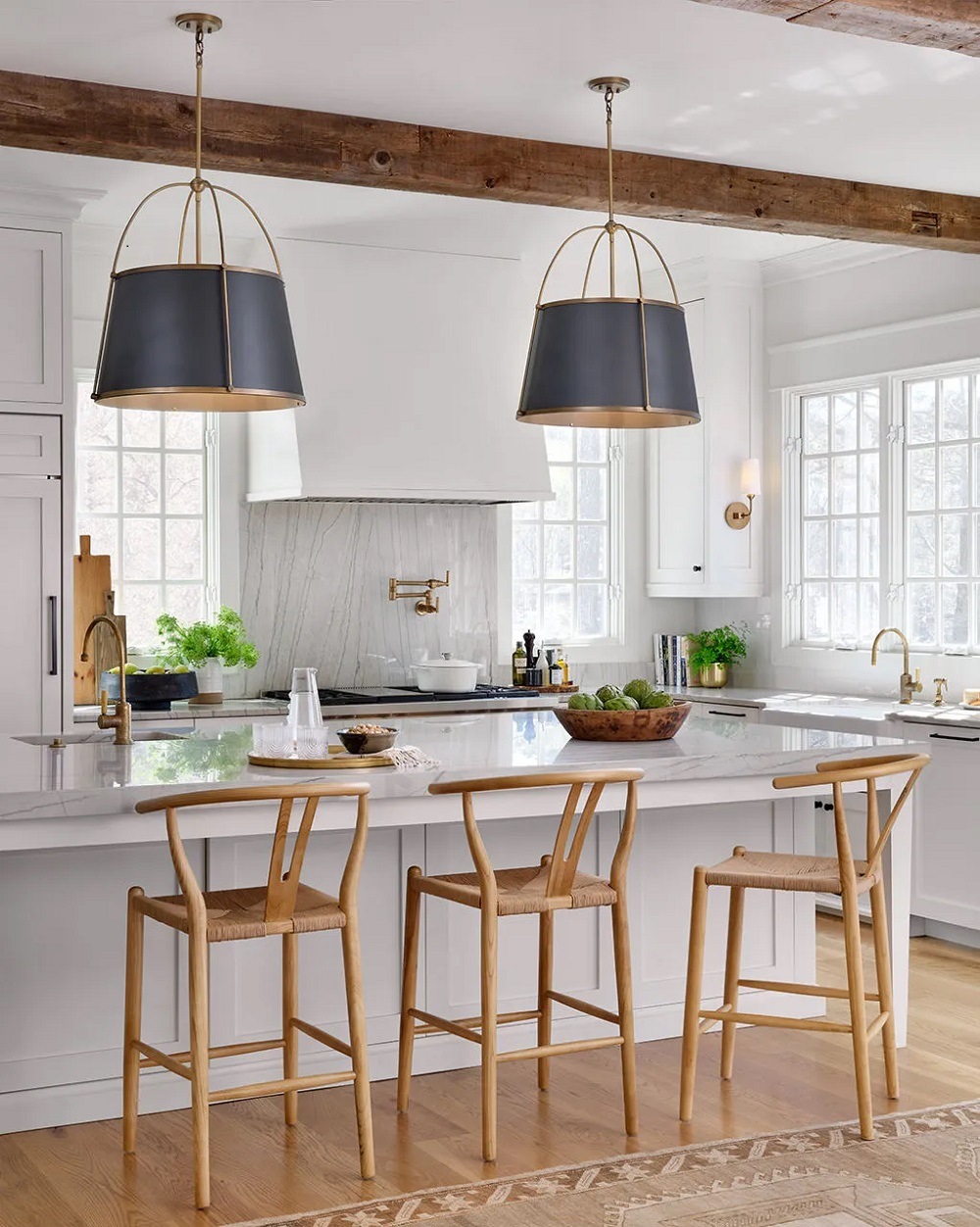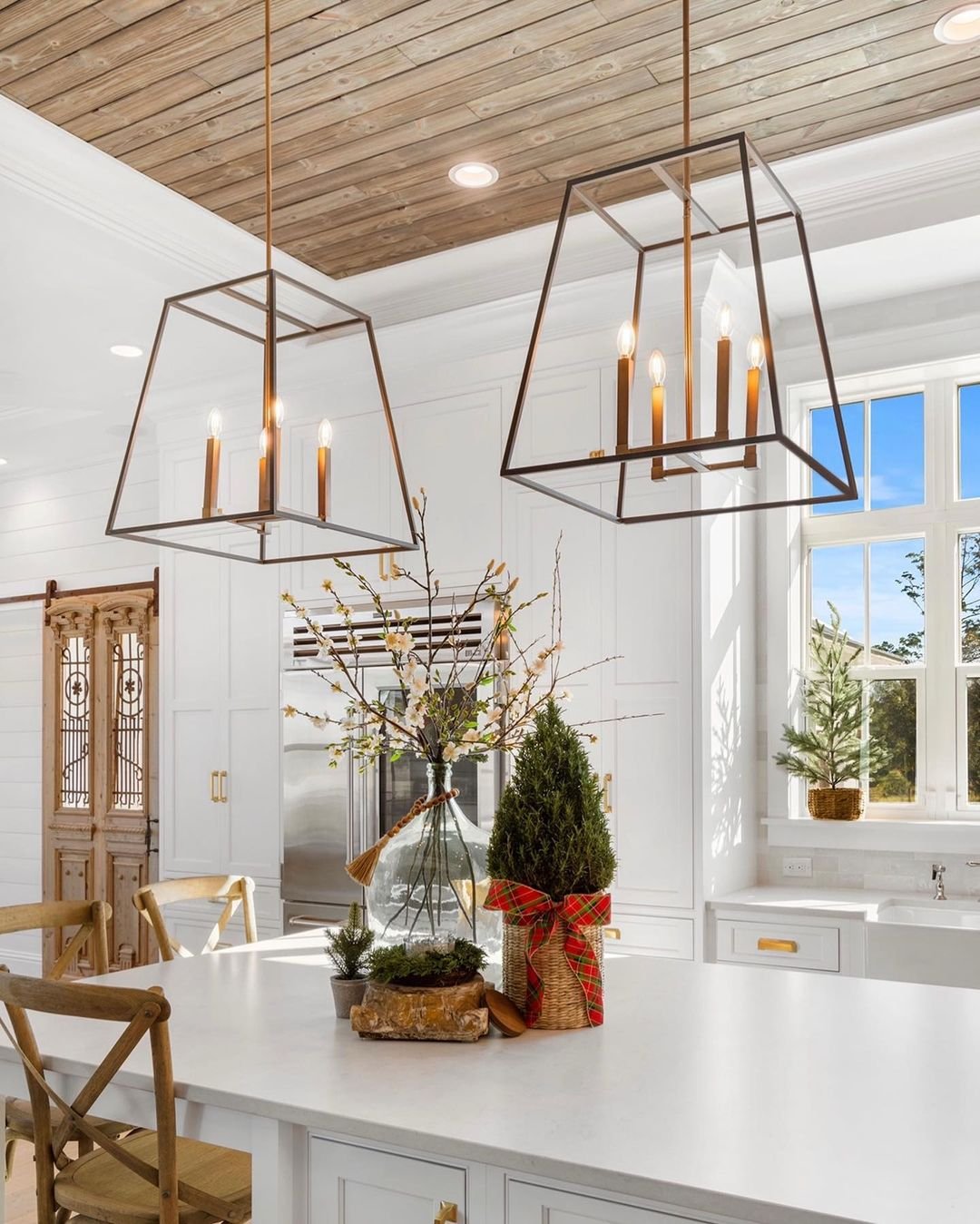General Lighting Tips
Updating your lighting, whether it’s a large or small project, is serious business.
With a little research and advance planning, your lighting selections will add beauty and functionality to each room in your home!
7 Smart Tips:
Choosing the Right Lighting
Tip 1: How High is Your Ceiling?
Matching the scale of the light fitting to the ceiling height creates balance in the room, without dominating the space, or getting lost and feeling out of proportion.
Taller ceilings provide an opportunity for larger and more dramatic light fixtures. High ceilings are perfect for chandeliers, pendant lights, or statement fixtures that not only illuminate but also act as focal points, adding grandeur and style.
Lower ceilings necessitate more compact light fittings to avoid overwhelming the space and to provide adequate illumination without causing visual clutter. With a wide variety of close to ceiling or flush mount fittings, you no longer have to compromise on style for lower ceiling heights.
Tip 2: What type of lighting do you need?
Each type of lighting plays a distinct role in interior design, contributing to the overall ambiance, functionality, and visual appeal of a space when used effectively in combination. Choose from ambient, accent, task or decorative.
Ambient lighting is the general, overall illumination of a space. This is usually achieved through ceiling-mounted fixtures, wall lights, or recessed lights. It provides a uniform level of brightness that allows people to move around and perform basic activities comfortably.
Accent lighting is used to highlight specific objects or areas within a room, such as artwork or architectural features. It creates visual interest and directs attention to particular focal points, usually through spotlights, track lighting, or wall-mounted fixtures.
Task lighting serves a functional purpose by providing focused illumination for activities that require more light, such as reading, cooking, or working at a desk. Examples include desk lamps, under-cabinet lighting in kitchens, or adjustable floor lamps.
Decorative lighting enhances the aesthetic appeal of a space, often serving as a design element in its own right. It can range from ornate chandeliers and pendant lights to decorative table lamps and wall lights, adding style and personality to a room.
Tip 3: How big is the room you are trying to illuminate?
Often when lighting a space, we want to use a larger fitting, however this isn’t always the best way. Scale is important, as well as layering light, to ensure you get the proper illumination and functionality.
Scale is crucial because it makes sure the size of the light fitting matches the room and its ceiling height. A light that's too big in a small room can be too much, while one that's too small might not give enough light or look odd in a large room. If you need more light, consider layering your lighting inspead.
Layering lighting involves combining different types of lighting—such as ambient, task, accent, and decorative—to create a versatile and balanced illumination scheme. This means that the lighting needs of the space, from overall brightness to task-specific requirements and decorative accents, are met effectively. By layering lighting, you enhance functionality while also enriching the ambiance, resulting in a more comfortable and visually appealing environment.
Tip 4: What design and finish works best?
Choose one that appeals to your personal style and will complement the overall décor of the room.
Design considerations should align with the overall style and architecture of the room, whether it's modern, traditional, minimalist, or eclectic.
The finish of the lighting fixture, such as polished chrome, matte black, brass, or glass, plays a significant role in complementing other decor elements like furniture and hardware. It's important to ensure that the chosen design and finish not only enhance the visual appeal of the room but also integrate seamlessly with its overall colour scheme and ambiance.
Selecting quality materials and craftsmanship ensures longevity and durability.
Tip 5: Are you considering all possibilities?
When lighting a home, there are various options to consider beyond traditional single fixtures like chandeliers. Some more unique options that create a feature of your lighting include:
Pendant Clusters: Instead of a single pendant light, create a cluster of pendants in varying sizes, shapes, or colours to add visual interest and a unique focal point. This can be particularly effective over dining tables, kitchen islands, or in stairwells.
Wall Grazing Lights: Install lights that graze or wash the walls with light, highlighting textured surfaces or architectural details like brickwork or stone.
Floor Washers: These low-profile fixtures are placed close to the floor to create a wash of light, enhancing the ambiance and making the room feel larger by emphasising the vertical surfaces.
Focal Point Spotlights: Use adjustable spotlights, tilt-able recessed lights or track lighting to highlight specific artwork, sculptures, or architectural elements like columns or fireplaces.
Lighting in Nooks and Crannies: Install small, recessed lights or mini spotlights in alcoves, corners, or niches to illuminate overlooked areas and add depth to the room.
Tip 6: What is the style of the exterior of your home?
You’ll want to choose outdoor lanterns that complement the style of your facade, not necessarily match the interior fixtures. Exterior lighting serves as a visual extension of your home's architecture and landscaping, creating a welcoming atmosphere and enhancing nighttime visibility. Selecting lanterns that work with the architectural style of your exterior, you are able to highlight the unique character of your home while also making a statement about its style and personality.
Tip 7: Have you considered the safety aspect?
Exterior lighting helps create safety around your property. Illuminating dark areas like paths, walkways, driveways, decks, patios, and stairs ensures visibility at night, reducing accidents and provides security by eliminating hiding spots. Well-placed lights also deter intruders and create a sense of safety for residents and guests, making outdoor spaces more enjoyable after sunset.


















